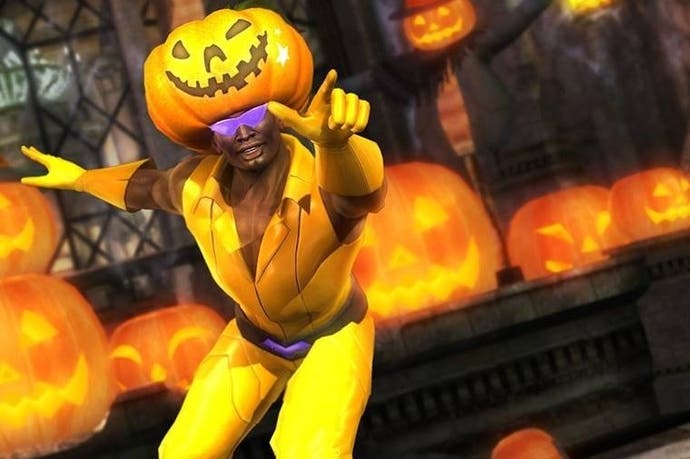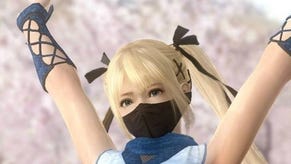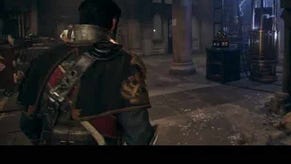Dead or Alive 5: Last Round review
Let's bounce.
Eurogamer has dropped review scores and replaced them with a new recommendation system. Read the editor's blog to find out more.
Despite its deliciously swift tempo, straightforward controls, lavish high play complexities and matches that can flip on a single misread lunge, Dead or Alive has always struggled to match the fame and recognition enjoyed by its rivals on merit alone. It is a middleweight in a world of heavyweights and therefore must seek attention through other means. A launch in peaceful February for this, the final iteration of Dead or Alive 5, is just one of the ways publisher Tecmo hopes to generate interest in the game. Then there's the extravagant number of characters, hundreds upon hundreds of costumes, play-modes and, of course, those headline-grasping breasts.
The series, which debuted in the arcades in 1996, is indisputably best known for its busts, which aren't so much titillating as deranged, rippling off in ludicrous directions every time their keeper successfully lands a punch. Dead or Alive is perhaps the only video game series with an option to set the 'breast physics', allowing you to pick between 'Natural', 'DOA' (which turns the wobble to eleven) or, most upsettingly of all, 'None' (which allows the breasts to not only defy gravity, but to exist, deadpan, outside of its pull entirely). All this mischief is slightly creepy and certainly childish but the real tragedy is that the asset for which Dead or Alive is best known has become a tremendous distraction from the game's more profound charms. This is, in truth, a wonderful fighting game, even if it's a poor judge of physiology.
For one thing, it is perhaps the most approachable serious fighting game. There are just two attack buttons: one for quick and short punches, and one for long and slow kicks. String together attacks and you create sensational combinations from what, at first glance, appears to be a restrictive vocabulary. There are no quarter- or half-circle turns a la Street Fighter and no zigzag stick motions a la King of Fighters. Instead of thumb-bending acrobatics, the emphasis is instead on stringing together hits with furious speed and precision. Another button triggers throws, another blocks and, without a jump input, complexity is introduced simply by positioning and the need to read your opponent.
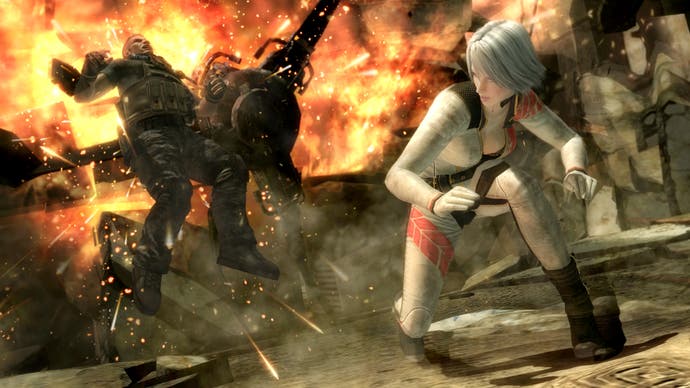
Last Round features an expansive and well-presented 42-step tutorial that will guide beginners through to the more advanced aspects of play, including the rock, paper, scissors triangle of rules that underpins the game (whereby strikes cut through attempts to throw, throws punish whiffed holds and holds beat strikes). You'll learn to execute Critical Stun attacks that leave your opponent open to combo strings, Power Blows that propel your foe backwards into props, juggles, launchers and all of the other skills that lead into the game's deeper technical waters.
Like Soul Calibur, Dead or Alive is 3D game that plays out primarily on a two-dimensional plane. In other words, you can't move freely around the 3D environment, only from side to side across it, side-stepping into or out of the screen to gain a better position. This is especially important here, as many of the game's stages have walls that you can send an opponent flying through and so-called 'Danger Zones', such as explosive barrels or electrified ropes, which will decimate an opponent launched into one. One memorable stage takes place on a raft as it descends a waterfall. Hurl your foe from the raft and they'll tumble through a flock of pink flamingos mid-flight, before landing with a health-bar shattering thud on the ground below.
Last Round's pitch is in its comprehensiveness. There's a Time Attack mode, a Survival mode, Arcade modes for both solo play and 'tag' play (this works similarly to Capcom's Marvel vs. Capcom series: non-active characters can recover some lost health while on the bench) and a non-tag brawl mode which allows you to pick up to seven characters and fight another seven characters in sequential order. Story mode is the most inventive of the set, a meandering tour through scores of one round matches around the world, that follow each of the characters en route to the DOA tournament. The cut-scenes are a debacle of over-acting and oblivious ethnic caricature, but in structural terms there's a feeling of escalating tension as you see each fighter's journey to the final tournament.
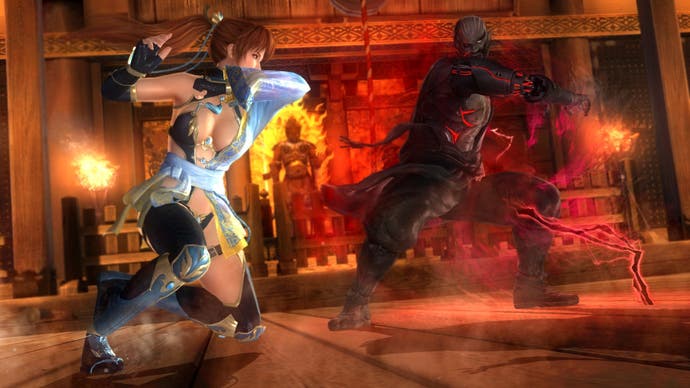
The story is visually laid out on a timeline, allowing you to dip in and out of chapters, and see how everyone's timelines fit together. In general, the steamier scenes are harmless and clichéd (one character 'accidentally' leaves her camcorder running while she takes a shower, for example) but it's all fairly PG-12. More lascivious are many of the hundreds of costumes on offer. In particular, the threadbare bikini options available to some of the women make a mockery of the fight scenes (Christie's leg sweep is apparently unhindered by her disappearing thong and nine-inch heels get-up), while the option to have characters' bodies dirty as they're thrown about the dust and soil can give scenes an air of HBO murder victim-in-waiting disquiet. The majority of costumes (some of which were designed by fans) are more tasteful, however, ranging from traditional martial arts sombreness, to outlandish comedy.
The animation throughout is spectacular, and the range of different fight styles, from Brad Wong's loose drunken style, Hitomi's orthodox karate to Bass Armstrong's abrasive wrestling, gives the game texture and differentiation. Unfortunately, our experiences with the game's online netcode, the arena in which you'll need to compete in order to master these various styles, were mixed. During the game's week of release we found it difficult to connect to other players and, when the game failed to match an opponent, at times we'd have to restart the entire game to free it from a frozen menu screen. Last Round's director, Yosuke Hayashi, has said that the studio plans to support the game in the long-term. Hopefully this will extend to continuing to improve the robustness of online modes which, when working, are everything they should be.
Dead or Alive: Last Round doesn't have the contortionist special moves required to master its Street Fighter rival, making this the more immediately accessible game by some margin. But neither does it have the mascots of Capcom's stable (it's telling, perhaps, that the most recognisable characters here are borrowed from Ninja Gaiden and Virtua Fighter). But at its deeper levels, it's an equally engaging and challenging proposition as its rivals, a quick tempo test of dexterity and reaction that, at its best, transcends the mildly grotty aspects for which it is best known.
